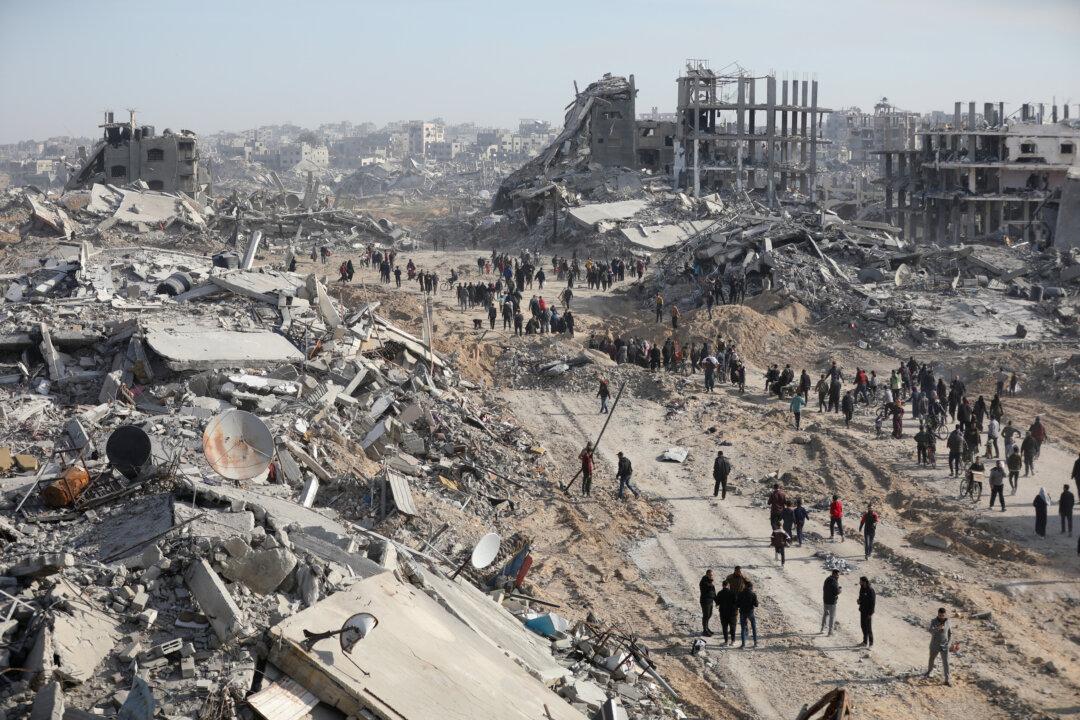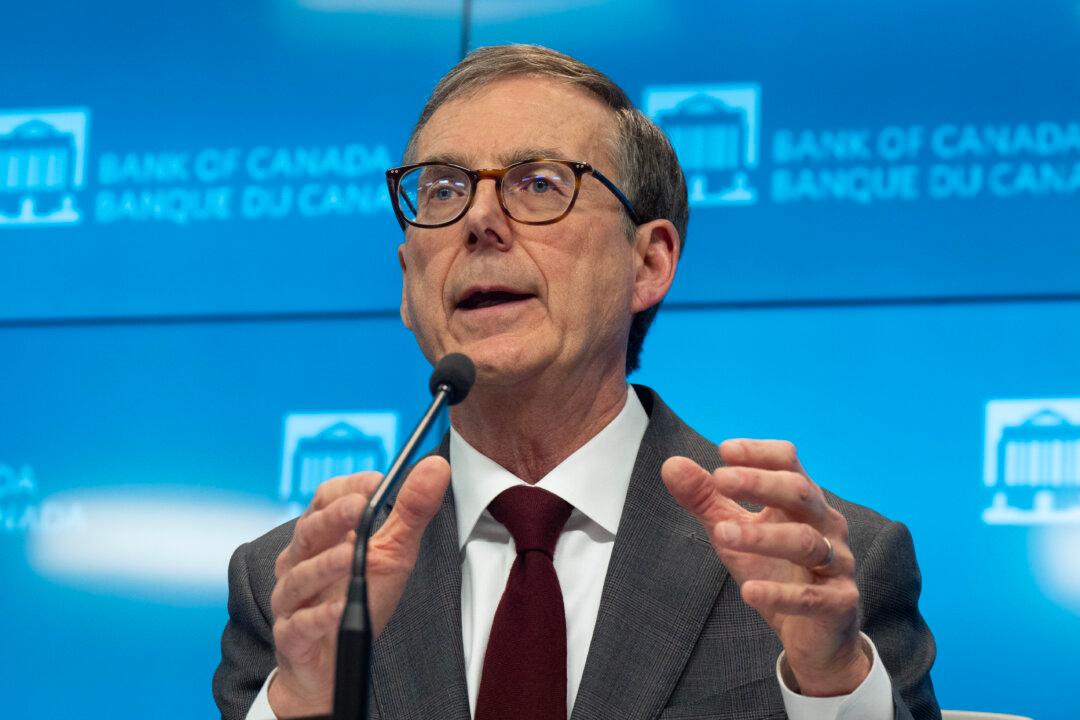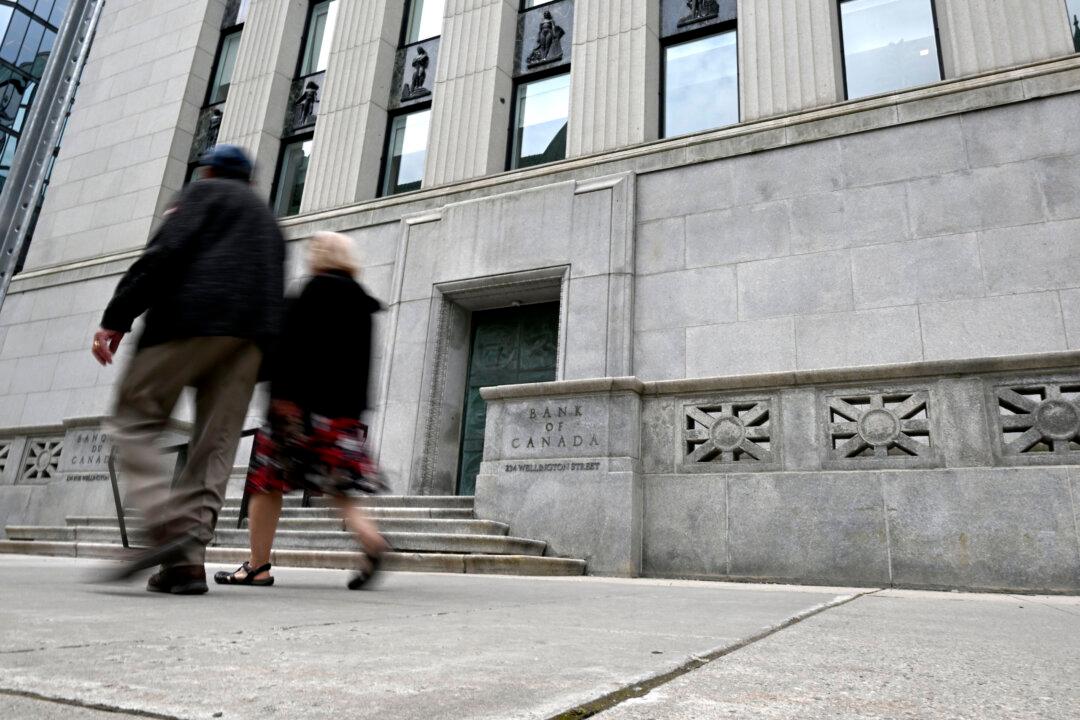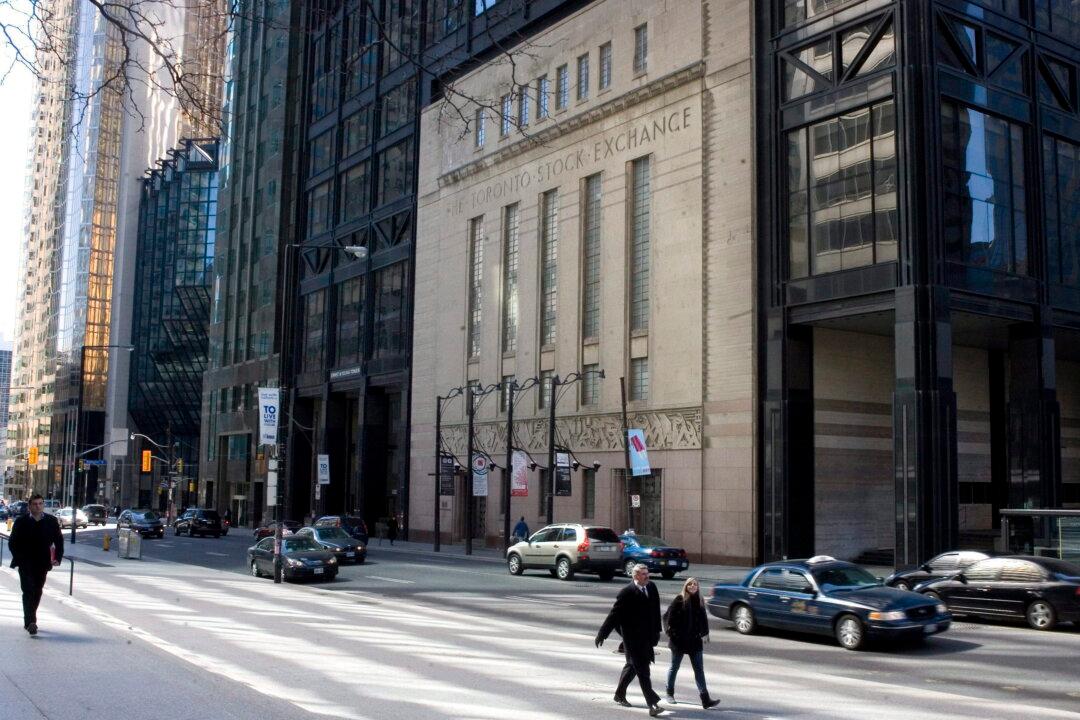Commentary
In the mid-1970s I was a struggling business and economics student. I paid for my tuition and personal expenses with physically demanding summer and part-time jobs and some student debt.
I dreamed of one day working on Canada’s version of Wall Street, which was located in Toronto at the corner of King and Bay streets. That dream came true in the spring of 1980 when the Dominion Bond Rating Service hired me as a junior analyst. Four of the five big Canadian banks occupied the corners of King and Bay in their impressive skyscrapers. A block away were the golden towers of Canada’s largest financial institution, the Royal Bank of Canada. A book published in 1982 was named “Towers of Gold, Feet of Clay,” a reference to the fact the two RBC towers literally have a thin layer of gold coating their windows.
Locating the banks and brokers so closely together made sense at the time. There was no internet, no email, no cellphones, and no video conferencing. There weren’t even spreadsheets available at the beginning of the 1980s. When bankers and brokers met to discuss a new equity or bond issue, relevant executives would meet in one of their boardrooms. In those days, there were almost no food courts. Plebes like myself would pack a sandwich and some fruit and work through lunch. Every other Friday my boss would take us to a deliciously tacky restaurant named Ed’s Warehouse and we would order the only item on the menu: roast beef with frozen peas and watery mashed potatoes. The big shots would eat lunch at pretentious restaurants and private men’s clubs.At 6 p.m. the entire area shut down, except for a few investment bankers burning the midnight oil to write up deals. As Bay Street and Toronto grew, more people flocked to the Financial District. Food courts, bars, and pubs opened. People began staying in the area after work to have dinner and drinks. Eventually, grotesque condominiums were built nearby to house those who didn’t want to commute, had no children, or didn’t make enough to afford a single-family home.
Fast forward to 2023. Three years after the onset of the lockdowns, many offices remain half empty. The pre-2020 crowds who ate and shopped in the underground area beneath the towers are far smaller. In fact, before the lockdowns the underground was overcrowded to the point of being an introvert’s worst nightmare. The changes in the Toronto Financial District mirror the story of most downtown cores of major cities across North America, if not the industrialized world.
The trend of people working from home is here to stay. Office space is expensive, and in the case of many workers, any drop in productivity is offset by the savings in rent. Unlike those of us who worked in the 1980s, we now have video conferencing, email, and all sorts of tools to help us work. In my case, I spent most of my time alone analyzing investments, portfolios, and the economy. Coming into the office wasted my time. I was ahead of my time. The one-way commuting time in cities like New York, Los Angeles, and Toronto average one hour. Working from home literally gives workers significantly more time to actually live. They can now avoid being stuck in traffic or being crushed by other people taking public transportation, some of whom seem to have not showered since the last financial crisis.
What do these lamentations about the demise of financial districts have to do with the outlook for commercial real estate? My point is to emphasize that commercial real estate is entering a perfect storm the likes of which we’ve never seen on a systemic level. Individual cities like Detroit have collapsed and many Wall Street firms moved to mid-town beginning in the 1970s, but this is now happening in most cities.
A societal change in the desirability and need to work in large downtown office buildings is occurring. This reality will hit home due to our current financial problems. Office real estate with be hammered, and unlike the past this is a secular change coinciding with a cyclical downturn. Profitable office real estate relies on a few parameters. It is actually a very simple business. A landlord charges rent. After expenses, the landlord makes income. If rents increase, the value of the property goes up and more rent can be charged. The building can be sold at a large profit.
The largest expense for a landlord is usually interest costs. That is because of debt. A landlord may buy a building for $100 million using $20 million in equity and $80 million in debt. (Obviously this is a theoretical example for illustrative purposes. The owner will take out a loan for a few years at, for example, 3 percent. In this case interest would cost $2.4 million. If the building is fully occupied, rents collected total $6 million and operating costs are $1 million, the landlord will make $2.6 million. His return on his $20 million in equity is 13 percent ($2.6 million divided by $20 million). (Again, this is just an illustration).
This works out great both in theory and in practice. Rents eventually go up and the value of the building goes up. The landlord is happy, the tenants are happy if the building is well managed, and the bankers are also happy because they are earning $2.4 million on a property with a collateral value of $100 million. That interest eventually goes to the bank’s depositors and shareholders. Everyone wins. Ain’t capitalism grand!
We have gone through a prolonged period of artificially low interest rates that were below inflation. That era ended in late 2020 as inflation spiked. Real estate companies became reliant on these historically unprecedented low rates. Now with rates rising dramatically and in a short period of time, the commercial real estate sector, especially in the office building subsector, is at the beginning of a perfect storm. As leases expire, tenants will reduce the amount of square footage they will rent. Consequently, vacancy rates will soar. Landlords will have to cut rents to keep tenants. Lower rents plus increased vacancy rates will result in cratering revenue.
If this was not bad enough, as loans mature they will be renewed at significantly higher rates. Real estate investments that were once cash cows will become bottomless money pits. This vicious circle continues as the value of these properties drops. Banks will see the value of their collateral drop and therefore not be able to roll over the entire loan. Our hypothetical building now has negative equity—the amount of the loan is higher than the value of the building.
Banks will be negatively impacted as the commercial real estate market falls. Anyone exposed to banks through their mutual funds and pension plans will see their wealth decline. Public and private pension plans are significant investors in real estate. If this situation gets as bad as some think it will, pension plans may also struggle with their liabilities.
Artificially low rates and the deterioration of our once great cities have resulted in a dire situation that will affect us all. We are in a great reckoning. Although it may seem strange, our desire for security and ease has made things less secure and more difficult. In retrospect, the homeless junkies who begged you for change over the years were a harbinger of bad times.





